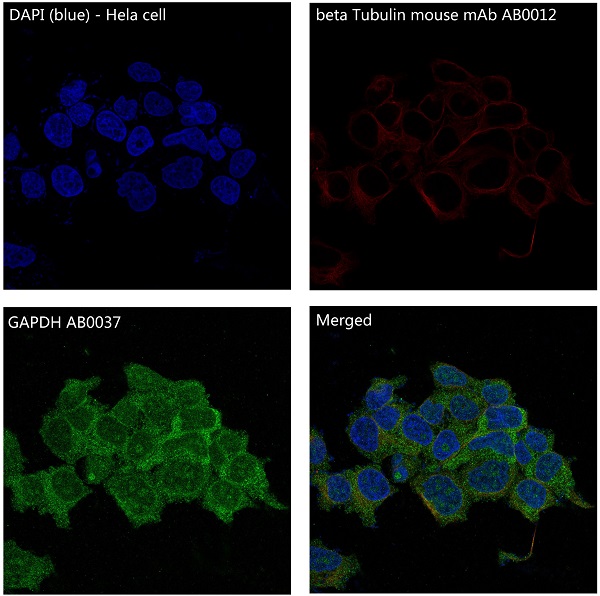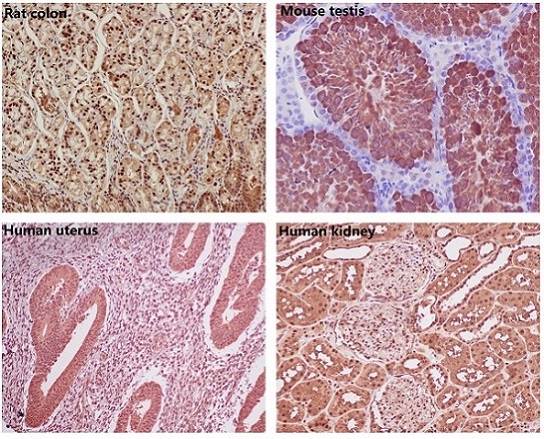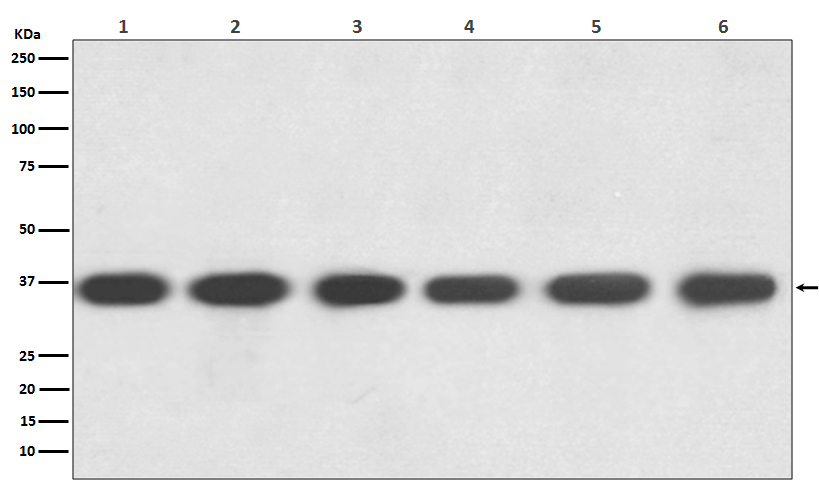-
Product Name
Anti-GAPDH Rabbit antibody
- Documents
-
Description
GAPDH Rabbit polyclonal antibody
-
Tested applications
WB, IHC-P, ICC/IF, IP, FC
-
Species reactivity
Human, Mouse, Rat, Monkey, Chicken, Zebrafish
-
Isotype
Rabbit IgG
-
Preparation
Antigen: A synthesized peptide derived from human GAPDH
-
Clonality
Polyclonal
-
Formulation
Rabbit IgG in phosphate buffered saline , pH 7.4, 150mM NaCl, 0.02% sodium azide and 50% glycerol.
-
Storage instructions
Store at 4°C short term. Store at -20°C long term. Avoid freeze / thaw cycle.
-
Applications
WB: 1/3000-1/10000
IHC: 1/100-1/500
ICC/IF: 1/100-1/250
IP: 1/50
FC: 1/50
-
Validations

Immunofluorescent analysis of Hela cells, using GAPDH Antibody .

Immunohistochemical analysis of paraffin-embedded (1) Rat colon; (2) Mouse testis; (3) Human uterus; (4) Human kidney, using GAPDH Antibody .

Western blot analysis of GAPDH expression in (1) Hela cell lysate; (2)Jurkat cell lysate; (3)Mouse kidney lysate; (4) Mouse spleen lysate; (5) RAW 264.7 cell lysate; (6) Rat brain lysate with GAPDH Antibody.
-
Background
Swiss-Prot Acc.P04406.Glyceraldehyde 3 phosphate dehydrogenase (GAPDH) is well known as one of the key enzymes involved in glycolysis. GAPDH is constitutively abundant expressed in almost cell types at high levels, therefore antibodies against GAPDH are useful as loading controls for Western Blotting. Some pathology factors, such as hypoxia and diabetes, increased or decreased GAPDH expression in certain cell types.
-
References
- 1.Repression of miR-135b-5p promotes metastasis of early-stage breast cancer by regulating downstream target SDCBP.2.Jumonji domain-containing 6 (JMJD6) identified as a potential therapeutic target in ovarian cancer
Related Products / Services
Please note: All products are "FOR RESEARCH USE ONLY AND ARE NOT INTENDED FOR DIAGNOSTIC OR THERAPEUTIC USE"
